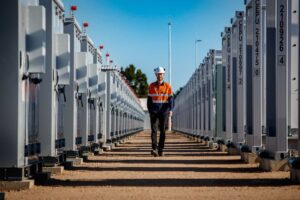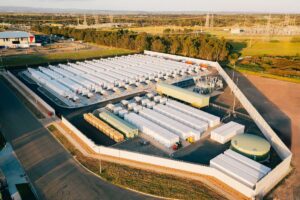The latest 10-year forecast for the West Australia state grid highlights massive changes ahead as rooftop solar entrenches its position as the dominant technology on the local network, so much so that the closure of two of the remaining coal units in 2022 and 2024 will not be missed.
The Australian Energy Market Operator on Tuesday released its ESOO (Energy Statement of Opportunities) for the Wholesale Electricity Market, another name for the W.A. market that operates in what is also known as the South West Interconnected System.
The W.A. market is one of the world’s biggest isolated systems. And its lack of connections to another market makes its transition to what AEMO describes as a “decentralised, democratised, and digitalised system” a fascinating one for the energy industry.
And the headline information in the latest ESOO is all about rooftop solar. The central assumption is that rooftop solar PV will double in capacity to around 2,612MW by 2030, by which time it will reduce total operational demand by around 20 per cent.
Because of that, it is the major contributor to a predicted 0.4 per cent annual fall in average consumption over the next 10 years and a 0.2 per cent annual fall in peak demand. And it will push daily demand peaks from between 5pm and 6pm to beyond 6.30pm.
- The biggest impact of rooftop PV on the grid will not be on the peaks, but its role in slashing “minimum” demand, which over the next few years will be cut to levels below 700MW (assuming a fall of 12.5 per cent a year), which is the point at which the market operator worries about its impact on system security.
- “This world-leading adoption of rooftop solar PV and the changes in the generational mix …. presents both operational challenges and exciting opportunities,” the head of AEMO Cameron Parotte, says in an accompanying press release, echoing comments he has made previously.
- The W.A. state government has embraced this and is now leading the country in the development of its own versions of an Integrated System Plan, a rewrite of market rules, and a roadmap for the uptake of distributed energy.
This DER roadmap is a crucial component because it will lead to the adoption of new inverter standards and other market signals and protocols that will encourage more distributed energy – rooftop solar, battery storage (both household and community level) and electric vehicles – while ensuring they occur in a co-ordinated manner that assists the grid, and delivers a new resource to the market operator.
“AEMO believes the review of technical standards, regulatory, and market constructs are required, with practical and careful design needed to implement or incentivise new technologies in the SWIS,” Parotte says.
“A number of industry projects are underway which are focused on ensuring consumer expectations for reliable, secure and affordable energy are being addressed.”
The current installed capacity of rooftop solar PV – 1,329MW in February this year – compares to the 854MW capacity of the state’s largest power station, Muja CD, a coal generator that will see two of its four units retired in the next four years.
AEMO chief executive Audrey Zibelman says the closure of the two coal units should not be an issue.
“Consistent with findings released in 2019 and assuming there are no major changes to committed capacity, the report forecasts sufficient capacity will be available over the 10-year outlook period despite the staged retirement of Muja C units in the coming years,” Zibelman said.
This graph above gives an interesting insight into the generation and generational change in the W.A. grid. On the left are the coal generators, and at the top left (the oldest) are the two units to close by 2024. Then comes a mix of other fossil fuels, and then the large capacity solar and wind and hybrid (wind and solar) facilities.
While the central scenario assumes a doubling of rooftop solar PV to 2030, a “high” scenario suggests a possible trebling in capacity to 3,687MW by 2030.
Battery storage is expected to leap at an annual growth rate of 30.5 per cent from 65 MWh in June 2021, to 908 MWh in June 2030. But the uptake of battery storage could leap to around 2,700MWh by 2030 if battery prices fall further.
This next graph gives an insight into how rooftop solar PV has reduced peak demand. It is taken from February 4, 2020, which recorded the second-highest peak since the W.A. energy market started in 2006.
The peak reached 3,919MW following as the temperatures reached a peak of 43.4°C on a day that followed two consecutive hot days of more than 35°C. This was nearly 700MW above the peak of the previous, milder, summer.
AEMO says behind-the-meter PV generation is estimated to have reduced the 2019-20 summer peak demand by 179 MW, representing 4.4% of the underlying peak demand (4,098 MW) which occurred during the 17:00 to 17:30. It pushed the peak demand to later in the afternoon, and reduced it in aggregate.
RenewEconomy and its sister sites One Step Off The Grid and The Driven will continue to publish throughout the Covid-19 crisis, posting good news about technology and project development, and holding government, regulators and business to account. But as the conference market evaporates, and some advertisers pull in their budgets, readers can help by making a voluntary donation here to help ensure we can continue to offer the service free of charge and to as wide an audience as possible. Thank you for your support.











